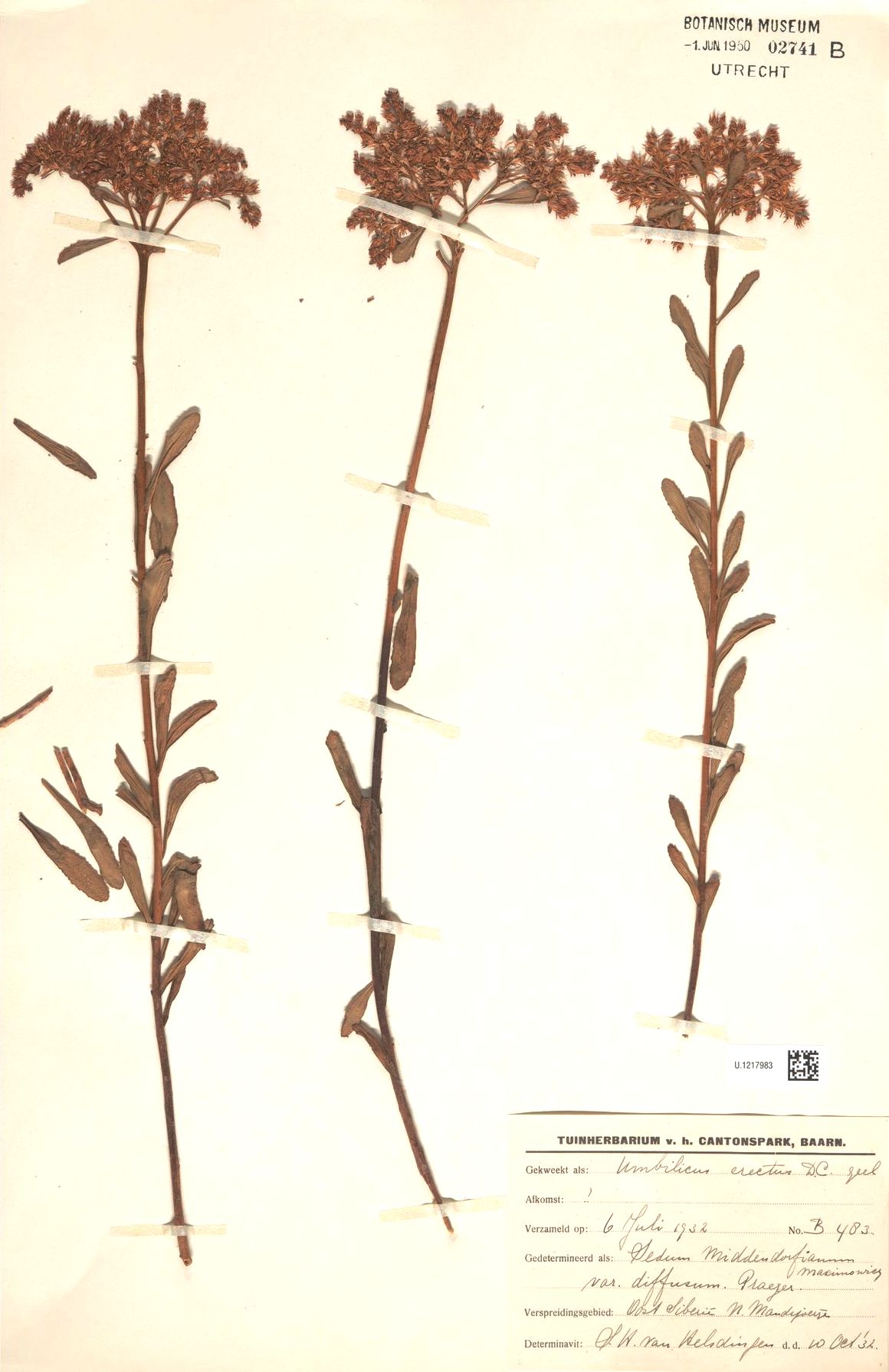Umbilicus erectus
Umbilicus erectus
The reniform Venus’ navel (Umbilicus erectus DC., 1805) is a herbaceous species belonging to the Crassulaceae family.
Systematics –
From a systematic point of view it belongs to:
Eukaryota Domain,
Kingdom Plantae,
Subarign Tracheobionta,
Spermatophyta superdivision,
Magnoliophyta Division,
Magnoliopsida class,
Subclass Rosidae,
Rosales Order,
Crassulaceae family,
Sempervivoideae subfamily,
Genus Umbilicus,
U. erectus species
The term is synonymous:
– Umbilicus luteus (Huds.) Webb & Berthel..
Etymology –
The term Umbilicus comes from umbilicus umbilicus: due to the shape of the centrally depressed, umbilicated leaves.
The specific epithet erectus refers to the erect, upright posture.
Geographic Distribution and Habitat –
Umbilicus erectus is a succulent plant, native to the Mediterranean basin, which grows in an area ranging from the southern Balkans to southern Italy.
Its habitat is varied, growing on rocks, ravines, cliffs and even areas with little substrate and, in any case, with an altitude limit of 0 m. at 800 m. s.l.m ..
Description –
Umbilicus erectus is a succulent, perennial plant that grows with an erect posture up to a height of 20-60 cm.
The leaves are reniform, centrally depressed, cordate.
The central stem bears an inflorescence with yellowish bracts. The corolla is 9-13 mm.
Flowering is from April to June.
Cultivation –
Umbilicus erectus is a plant that grows in a Mediterranean area in rocky places and cliffs and can still be grown with other plants in rock gardens.
The multiplication can take place by seed or, more rapidly, by portions of the plant and stem in poor and sandy substrates.
Customs and Traditions –
Umbilicus erectus is a succulent plant that plays an ecological role in maintaining certain herbaceous ecosystems in areas with scarce presence of substrate and rocks. It is a plant native to the Mediterranean basin that can be grown in rock gardens and that can also have medicinal applications.
In vitro research found that the extract of its leaves had a highly virucidal effect against acyclovir-resistant herpes simplex virus type 1 (ACV).
Preparation Method –
Umbilicus erectus is a plant that, in addition to its ecological role and as a potential ornamental plant for rock gardens, can find application in the medical field.
The leaves or the entire plant can be used from this plant species.
Guido Bissanti
Sources
– Acta Plantarum – Flora of the Italian Regions.
– Wikipedia, the free encyclopedia.
– GBIF, the Global Biodiversity Information Facility.
– Useful Tropical Plants Database.
– Conti F., Abbate G., Alessandrini A., Blasi C. (ed.), 2005. An annotated checklist of the Italian vascular flora, Palombi Editore.
– Pignatti S., 1982. Flora of Italy, Edagricole, Bologna.
– Treben M., 2000. Health from the Lord’s Pharmacy, Advice and experiences with medicinal herbs, Ennsthaler Editore.
Photo source:
– https://medialib.naturalis.nl/file/id/U.1217983/format/large
– https://ngoosen.fotki.com/crassulaceae/umbilicus-/umbilicus-erectus.html
Warning: Pharmaceutical applications and alimurgical uses are indicated for informational purposes only, they do not represent in any way a medical prescription; therefore no responsibility is taken for their use for curative, aesthetic or food purposes.


